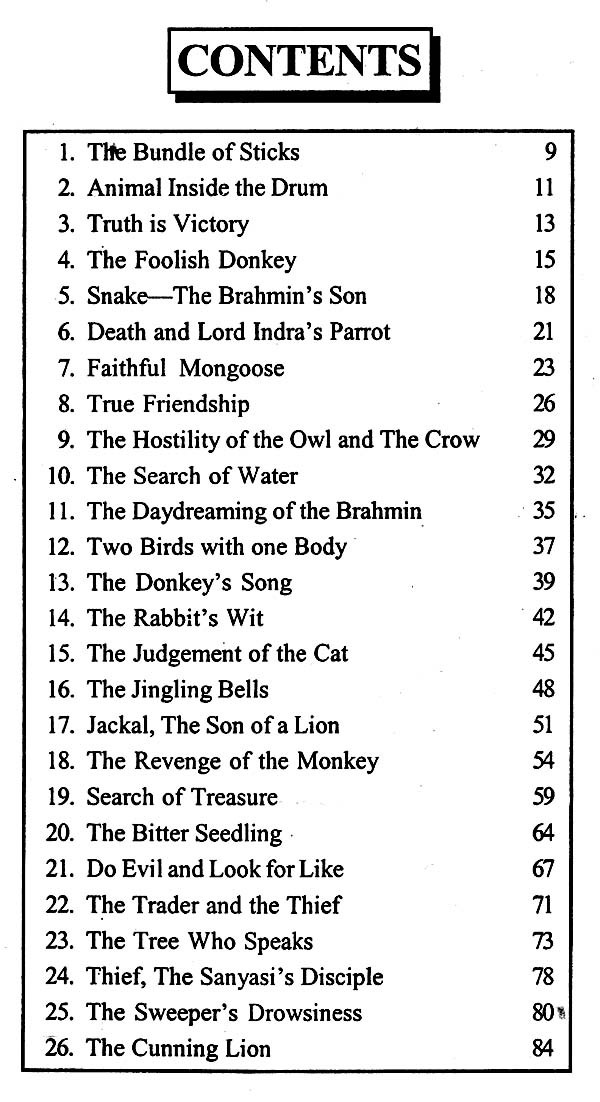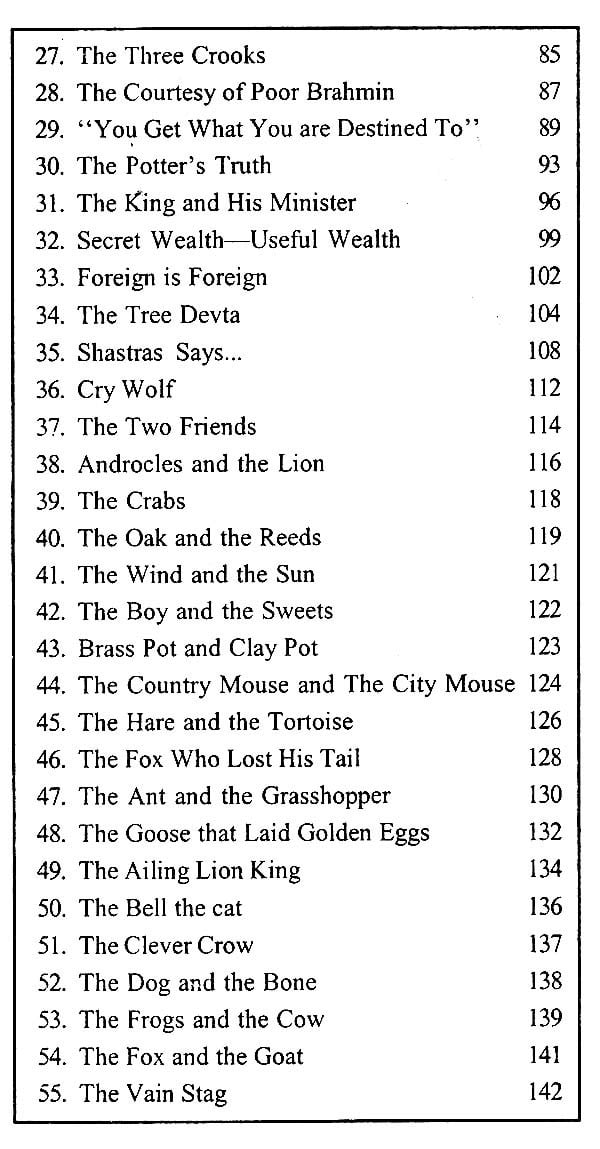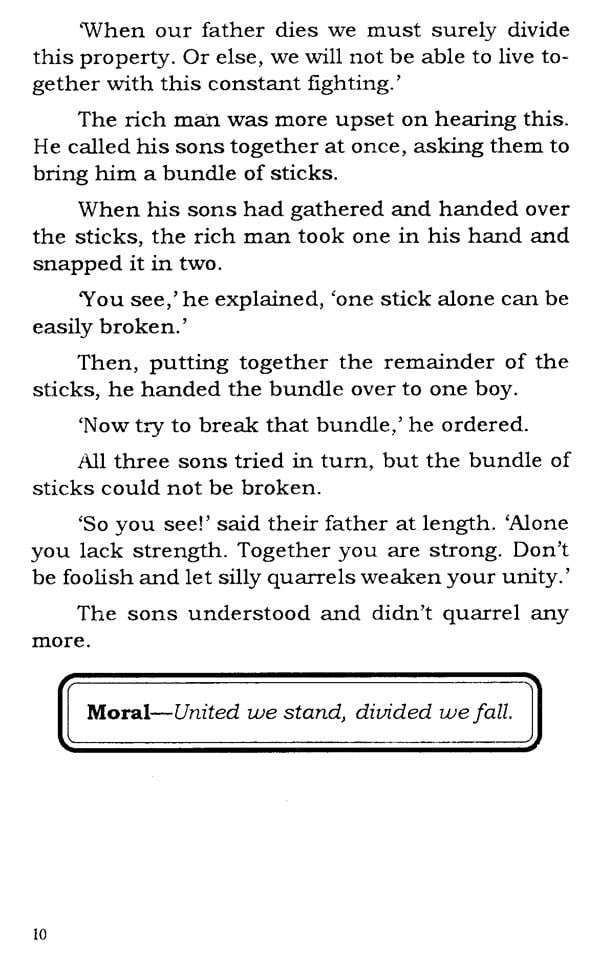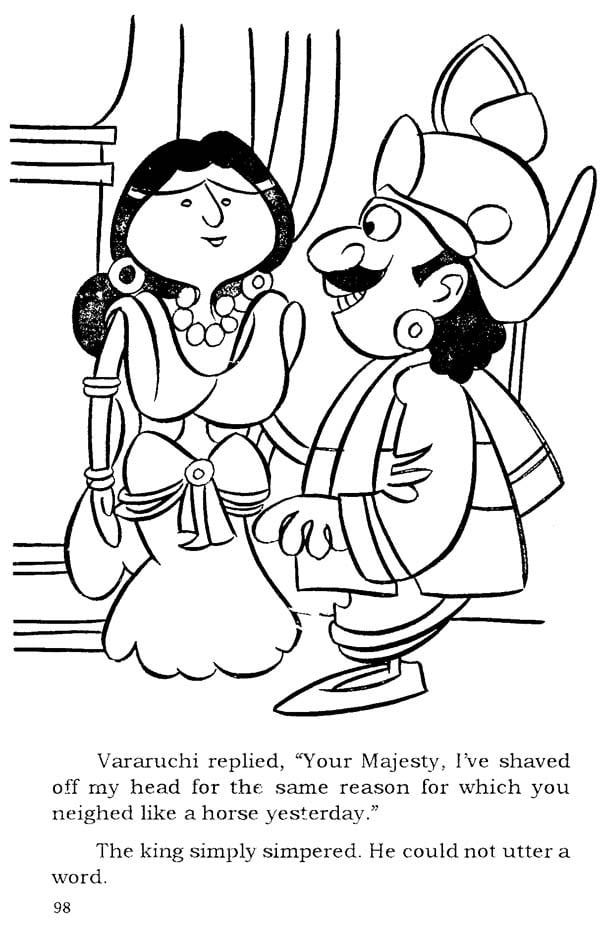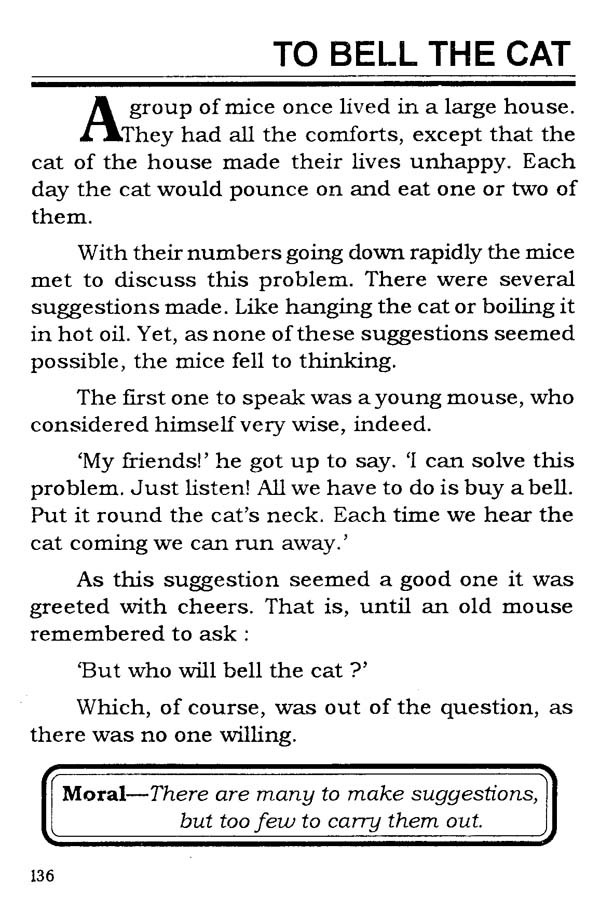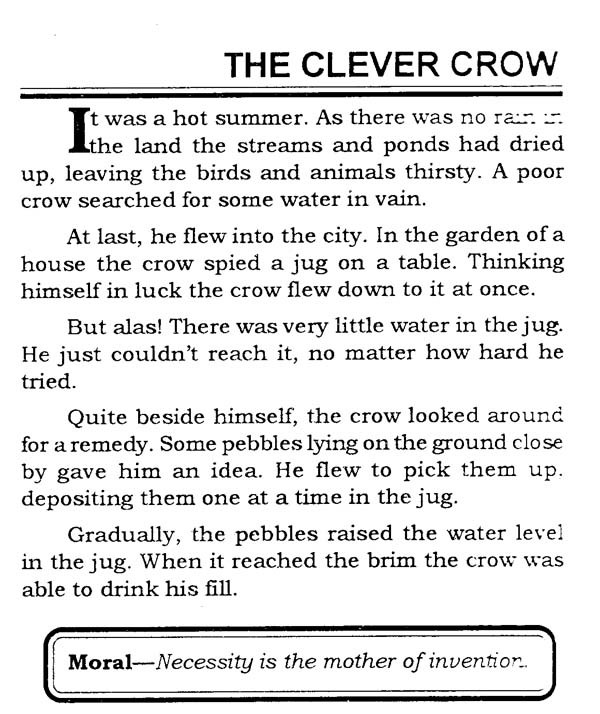
Panchtantra Ki Kathayen
Book Specification
| Item Code: | AZC313 |
| Author: | Arvind Nanda |
| Publisher: | Ravi Pocket Books |
| Language: | English |
| Pages: | 144 (Throughout B/W Illustrations) |
| Cover: | Paperback |
| Other Details | 7 x 5 Inches |
| Weight | 128 gm |
Book Description
Once upon a time, a King named of Amarshakti, ruled over Mahilaropyam, which is situated in the south of India. The King was loved by his subjects and courtiers for his tradition and bravery. Amarshakti had three dull-minded sons. All the three had no princely traits in them, in fact, they did not take interest in studying or learning any art. The King was always distorted at the thought, that what will happen of his Kingdom after him, as all the three sons had no sign of worthiness which could prove their capability of ruling the Kingdom. After a lot of thinking, the King summoned on urgent meeting of his able ministers and courtiers to find the solution of this problem. He announced that anybody who will make his sons educated and able of ruling the Kingdom will be honoured by a lot of wealth. Despite this announcement anybody of them, presented in the meeting, couldn't dare to present himself for this difficult task.
Alast, a learned minister suggested to King he name of a great Brahmin scholar, Pandit Vishnu Sharma. The King invited him in his royal court and told him about his problem. Vishnu Sharma agreed to educate his sons. He said that he will educate his sons in ‘Nitishastra' only in six months period. He also told the King that he will enable the princes without any charge or reward.
The King accepted his condition and expressed his thanks and gratefulness to him. Amarshakti sent his sons to his hermitage with him. There Vishnu Sharma began to educate and recite them some specially composed fables. These fables were some interesting stories about birds and animals containing a moral in them. The stories, which Vishnu Sharma recited to the princes were knows as "Partchatantra." Panchatantra means Punch plus Tantra. In which 'Panch' suggests five and ‘Tantra' suggests the science of wise conduct in life. It is further described by the teachings of the art of confidence development, understand people, selection of good friends, attain wisdom and face the challenges of life. It is to be said about 'Pancha-tantra' - "A man well versed in this science shall always achieve glory in his life."
Panchatantra, which is probably regarded tone of the few Indian classics is originally written by an erudite Hindu scholar Pandit Vishnu Sharma. He wrote it in Sanskrit at the age of 80 around 550 A.D. or earlier. Its popularity can be guessed by the fact that it has been translated into more than 50 languages of the world. In this relation, there is a small illustration of the royal physician of Persia (Iran), Hakim Brume. He came to India to search `Sanjeevini' in order to cure his suffering King but he was disappointed when he couldn't get that special herb. At last, an Indian scholar suggested him of 'Panchatantra' about which it was to be said that it had a mystical healing effect on the suffering person if it is read out loudly before him.
Having impressed by this mystical fact the royal physician. Hakim Burgoe went to Persia with a copy of this mystical treatise. There he translated it into his Pahlavi language and recited to his suffering King. This had a mysterious effect on the King and he got well in a very short period. This made the Panchantra' popular in foreign countries like Arabia, Greece, and Europe. In 8th century A.D. the Arabic translation of Panchatantra came by the title of `Kalilah Diyanah Kartak Dammak,' which is popular amongst the readers even today. On 11 century A.D. its Greek and Russian translation appeared. The famousity of 'Panchatantra' began to touch the sky with its translation into different European languages. Its translation into old spanish language appeared in 1251 A.D. Some Italian scholars translated it in latin language in 1260 A.D., which proved a precursor of its German translation in 1480. In Italy its translation appeared in 1552. In 1570, Sir Thomas North again translated it successfully. Its second Edition published in 1601. Its French Version made crazy to the French book lovers of it and prepared the way of its publication or translation in Nepali, Chinese and Japanese languages.
In India, the translation of Panchatantra into our national language Hindi, appeared much later.
**Contents and Sample Pages**